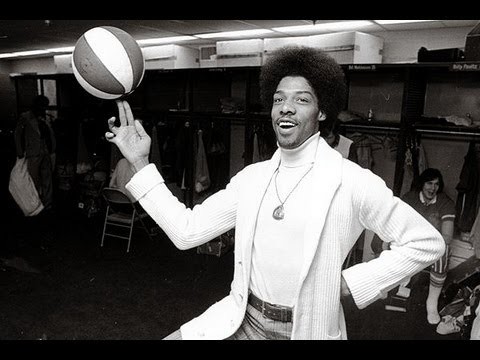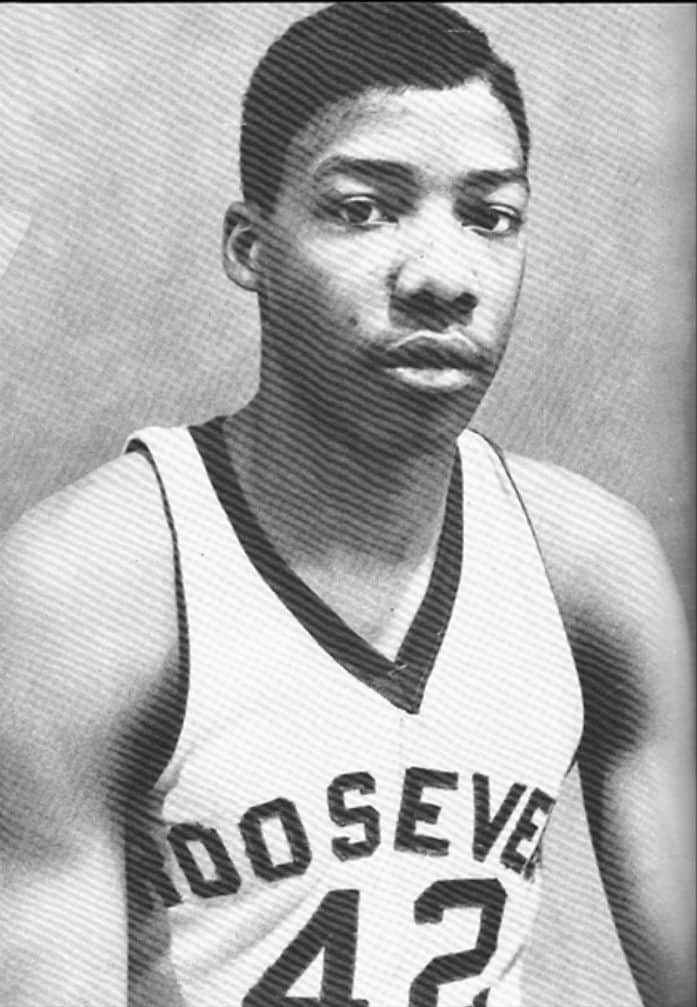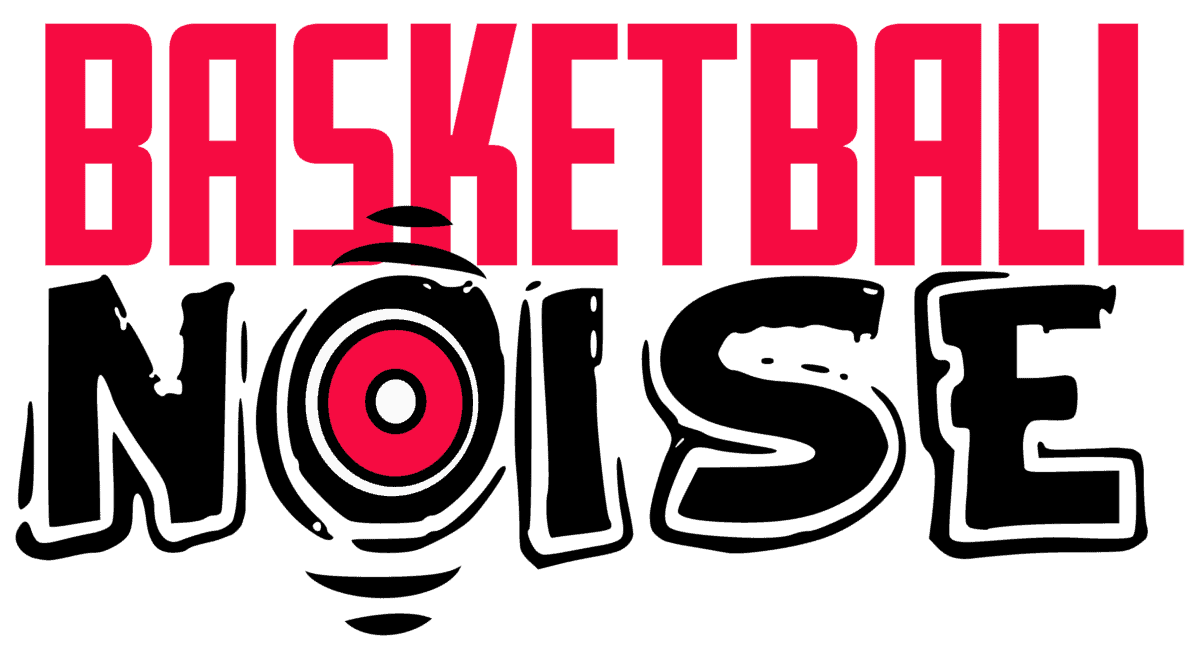Dr J was drafted 12th overall in the 1972 NBA draft. The 1972 draft was the 26th annual NBA draft and was held on the 10th of April. Erving was selected 12th overall by the Milwaukee Bucks, pairing him with Kareem Abdul Jabbar. But Erving never played a game for the Bucks.

If you want to know more about what turned out to be a precedent setting attempted switch from the ABA to the NBA, read on below. Why exactly did Dr J never suit up alongside Kareem on the Bucks?
Where did Dr J go to College?
When Julius Erving was drafted to the NBA in 1972, he had become a star at the University of Massachusetts, becoming one of the most legendary Minutemen. His two college basketball seasons were spectacular.
Erving averaged 26.3 points and 20.2 rebounds per game, becoming one of only six players in history to do this. Surprisingly, these statistics came without the ability to dunk, as in 1968, the NCAA passed a rule outlawing dunking. He left college after 1970, joining the Virginia Squires of the ABA thanks to their “hardship” rule that allows players to leave college early.
The University of Massachusetts does not have a storied basketball team. They only featured in the NCAA tournament once since the year 2000. Despite this, the school has still produced other NBA players like Marcus Camby, Gary Forbes and Lou Roe. Camby is the standout of that group, the 2007 NBA Defensive player of the year was a lockdown centre.
Who was drafted in the 1972 NBA draft?
From a talented class, of course, hall of Famer Julius Erving was the star of the show. But it does not mean that there were no other stars drafted in 1972. Bob McAdoo was drafted second overall. McAdoo went on to become a two time NBA world champion, as well as being NBA MVP in 1975.
But McAdoo was not the only notable player drafted in 1972. Fans may not know about Paul Westphal, who was drafted two picks ahead of Erving. The former USC Trojan is an NBA champion, five-time all-star and three-time All-NBA first team. After his playing career, Westphal guided the Phoenix Suns to the NBA finals in 1993 as head coach, where the team eventually lost to Michael Jordan and the Chicago Bulls.
It means that the 1972 NBA draft produced three Hall of Famers. Former all-stars Jim Price and Don Buse were also drafted in 1972, but did not have the same careers as the three Hall of Famers.
Why Did Dr J never play for the Bucks?
In the 1972 NBA draft, the Milwaukee Bucks used their first pick to choose Julius Erving. Despite becoming an NBA legend and Hall of Famer, Erving never played for the Bucks.
A year prior to being drafted, Erving left college a year early to join the Virginia Squires of the ABA. In his first season in the ABA, Erving averaged 27.3 points per game which increased to 33.3 points per game in the 1972 ABA playoffs. It was an incredible performance from the young man, but he still fell to 12th overall.
So when the Bucks drafted him, it was unclear whether Erving would join the team. To make things even more complicated, prior to the draft, he had signed a contract with the Atlanta Hawks which was worth more than $1 million. The signing only happened because Erving was struggling to agree on a contract extension with the Squires.
It, therefore, meant that three different teams claimed that Erving should be playing for them. The Bucks were certain that through drafting Erving, he should join up with Milwaukee in preparation for the NBA season, if indeed he was planning on coming to the NBA.
But during pre-season, Dr J joined up with the Atlanta Hawks, joining Pete Maravich in training camp. After long deliberations. NBA commissioner J. Walter Kennedy ruled that the Bucks had the right to Erving through the draft. The Hawks were fined $25,000 for each of the three pre-season games that Erving played for them.
This looked like it would clear things up, but Erving did not want to play for the Bucks and on October 2nd, judge Edward Neaher issued an injunction that meant Erving could not play for any other team than the Squires, so he joined up with the team.
Erving played out his time with the Squires, before being traded to the New York Nets (then still in the ABA) a season later. Things were not sorted between the Bucks and the Hawks until 1975. New NBA Commissioner Larry O’Brien ordered the Hawks to pay $150,000 to the Bucks and give them two second-round picks in the following draft for the rights to Dr J. The Dr however did not call on the Hawks.
It became a huge “what if” in the NBA, as Erving later returned to the NBA in 1976 when the ABA and the NBA merged, Erving became an NBA legend despite never playing for the team that drafted him. He was close to joining the Bucks in 1976, before being bought by the Philadelphia 76ers for whom he would become a legend.
What did Dr J do after his Basketball career?
After retiring in 1987, Erving did not decide to pursue coaching as many other former players did. The first thing that Erving did after retiring was earning his bachelor’s degree. After that, Erving moved to become a businessman, purchasing ownership of a Coca-Cola bottling plant in Philadelphia as well as becoming a TV analyst.
Erving has also featured in a cameo role in two major films, starring in the Tom Hanks and Denzel Washington film Philadelphia as well as the sitcom Hangin with Mr Cooper. More recently, Erving appeared in an Office episode in the ninth season of the show.
Which NBA teams did Dr J play for?
After beginning his career in the ABA, Erving moved to the NBA when the two leagues merged in 1976. While his New York Nets had joined the NBA, financial difficulties meant they could not fulfil Erving’s contract and so had to look to move him on. Eventually, Erving’s contract was bought by the Philadelphia 76ers.
Erving fit in with the Sixers perfectly and ended up playing eleven seasons with the Sixers. He retired as a Sixer, with Philadelphia being the only team in the NBA that Erving ended up playing for, even though he was with the Nets prior to them joining the NBA. Although Erving also played for the Virginia Squires in the ABA, the team never made the switch to the NBA.
Why is Julius Erving referred to as Dr J
The NBA has some very cool nicknames, but there may not be any more interesting than Dr.J. But the nickname actually appeared much before Erving joined the NBA.
Erving actually first earned the nickname Dr J in high school, while attending Roosevelt High School in Roosevelt, New York. The story goes that Irving was given the nickname Dr J because he called a fellow basketball player and student the “Professor”. Clearly, the name stuck.

One of the most interesting parts about the nickname was that there were multiple different nicknames that he was given in high school. A couple of them were “The Claw” and “Black Moses”. But no other name was really liked by Erving and so the nickname Dr. J stuck.
How Many MVP Awards did Dr. J win?
In a storied basketball career, Julius Erving won four MVP awards. The first came in 1974, his first season with the New York Nets. Erving averaged 27.4 points per game as well as over ten rebounds per game as his Nets won the 1974 ABA title.
A year later, the Nets did not win a title, but with very similar numbers to the previous year, Erving won the 1975 ABA MVP award. His best year in the ABA came in 1975-76. As Erving led his Nets team to another title, he averaged 29.3 points and 11 rebounds per game picking up his third ABA MVP.
He would win his only NBA MVP in 1981 averaging 24.6 points, eight rebounds and 4.4 assists while leading the 76ers to an NBA joint best 62-20 record, tied with the Boston Celtics.
There is no doubt that Julius Erving has retired as an NBA legend. He finished his career with three titles, one in the NBA and two in the ABA. Four MVP awards combined with eleven all-star appearances helped to make Erving a guaranteed Hall of Famer. Dr J was inducted into the Basketball Hall of Fame in 1993 and has been recognised as one of the greatest players in NBA history for good reason.
Many NBA fans will know him for his incredible dunks, but Erving was a phenomenal all-round player. He helped to revolutionise the NBA, bringing slam dunks into the mainstream, but he wasn’t weak in any area of his game. A true all around legend.
